Mosaics in Sicily
Villa Romana del Casale
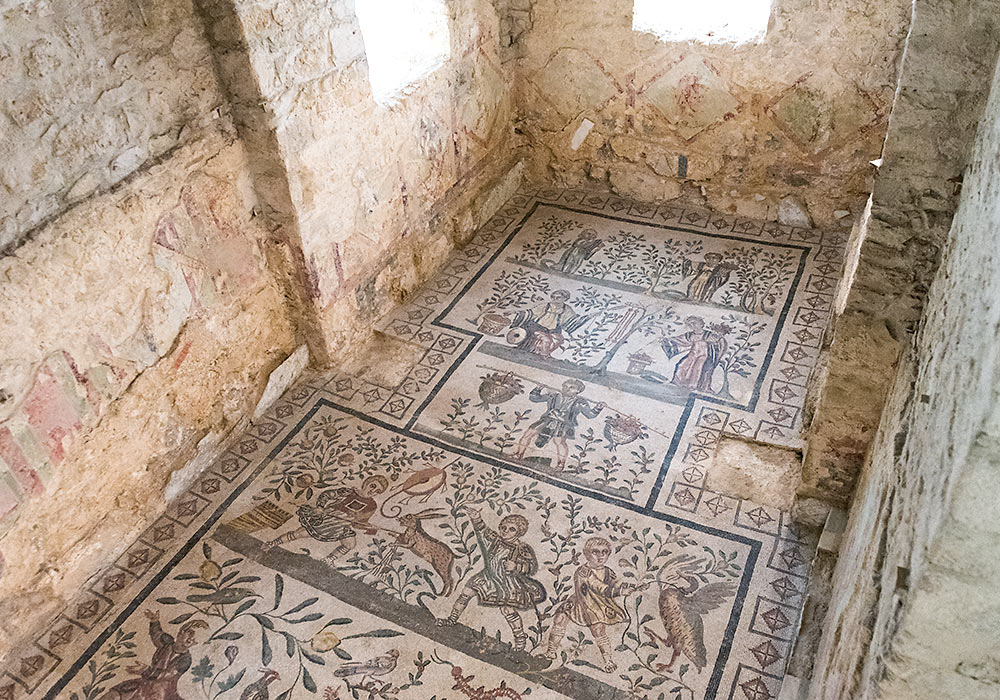
Mosaic floor in Villa Romana del Casale, Piazza Armerina.
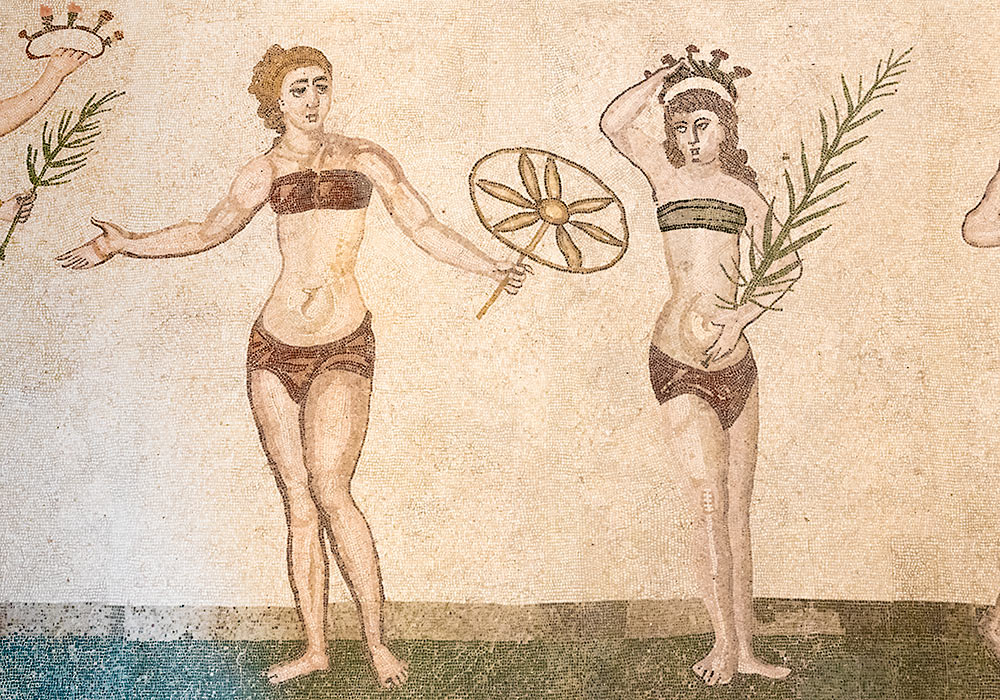
The "Bikini Girls" were actually athletes.
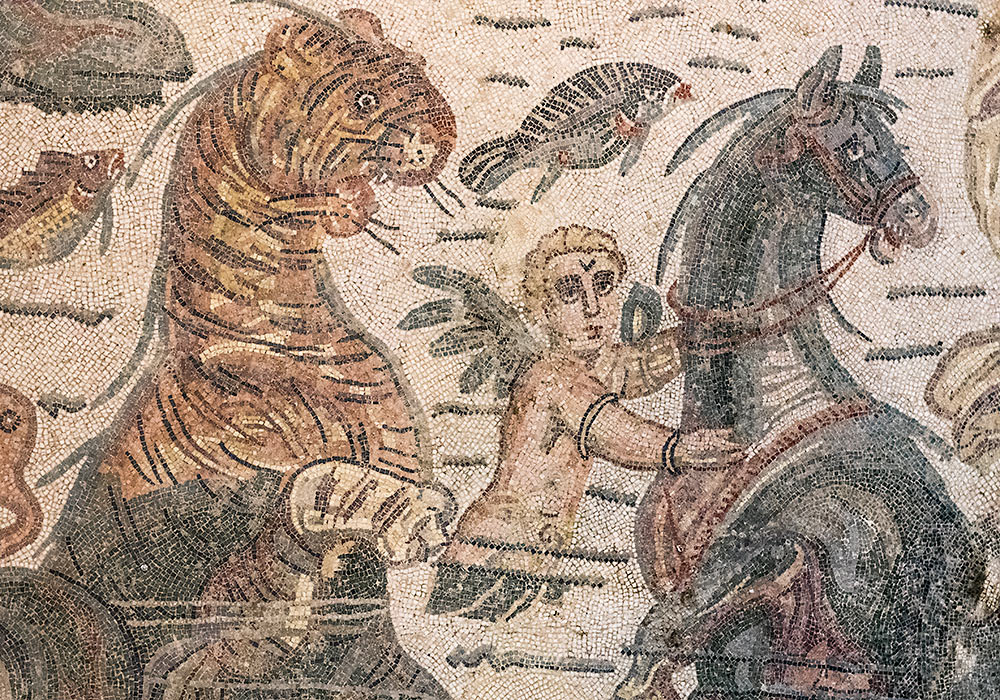
See more photos here from Villa Romana del Casale, Piazza Armerina ...
The Cathedral in Monreale
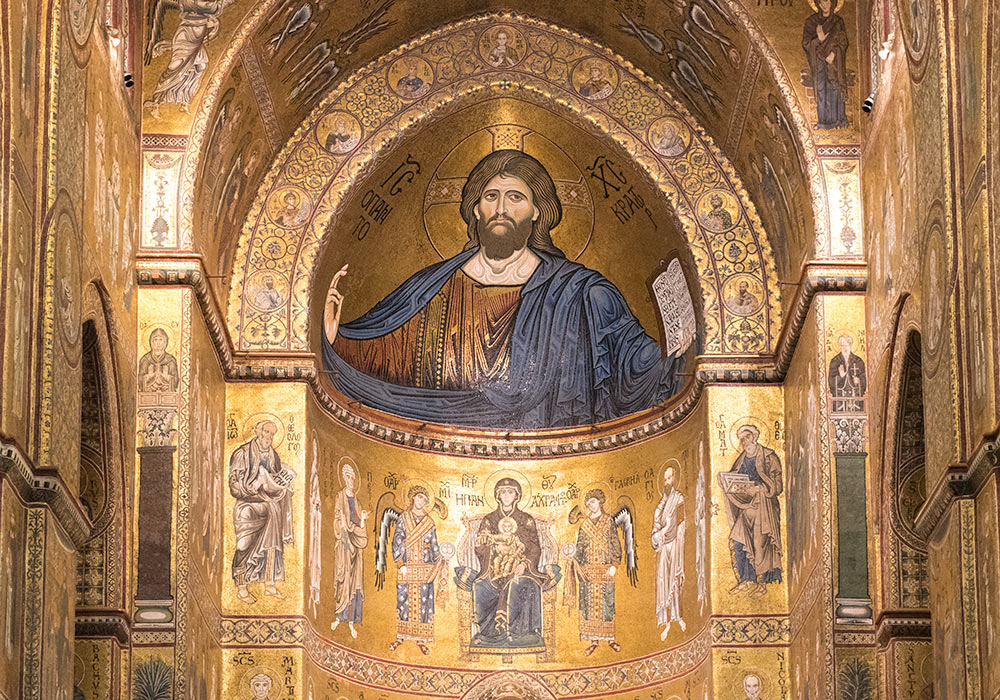
Christ Pantocrator: The cathedral in Monreale, Palermo, is regarded as the most beautiful of the Norman churches in Sicily. The mosaics were made with 2200 kg of pure gold, experts have estimated. Craftsmen from Constantinople were employed to expedite the work. The Byzantine mosaics are among the most magnificent in the world.
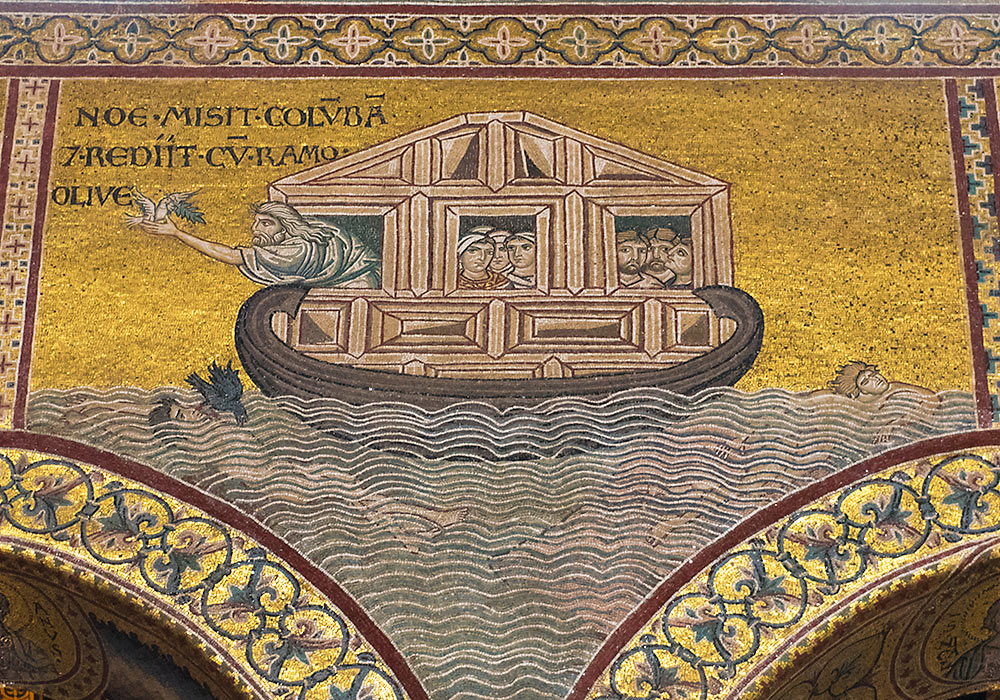
Mosaics on the south wall: Cycle of the Old Testament.
7 And he sent forth a raven, which went forth to and fro, until the waters were dried up from off the earth. 8 Also he sent forth a dove from him, to see if the waters were abated from off the face of the ground; 9 But the dove found no rest for the sole of her foot, and she returned unto him into the ark, for the waters were on the face of the whole earth: then he put forth his hand, and took her, and pulled her in unto him into the ark. 10 And he stayed yet other seven days; and again he sent forth the dove out of the ark; 11 And the dove came in to him in the evening; and, lo, in her mouth was an olive leaf pluckt off: so Noah knew that the waters were abated from off the earth. (GENESIS chapter 8, King James)
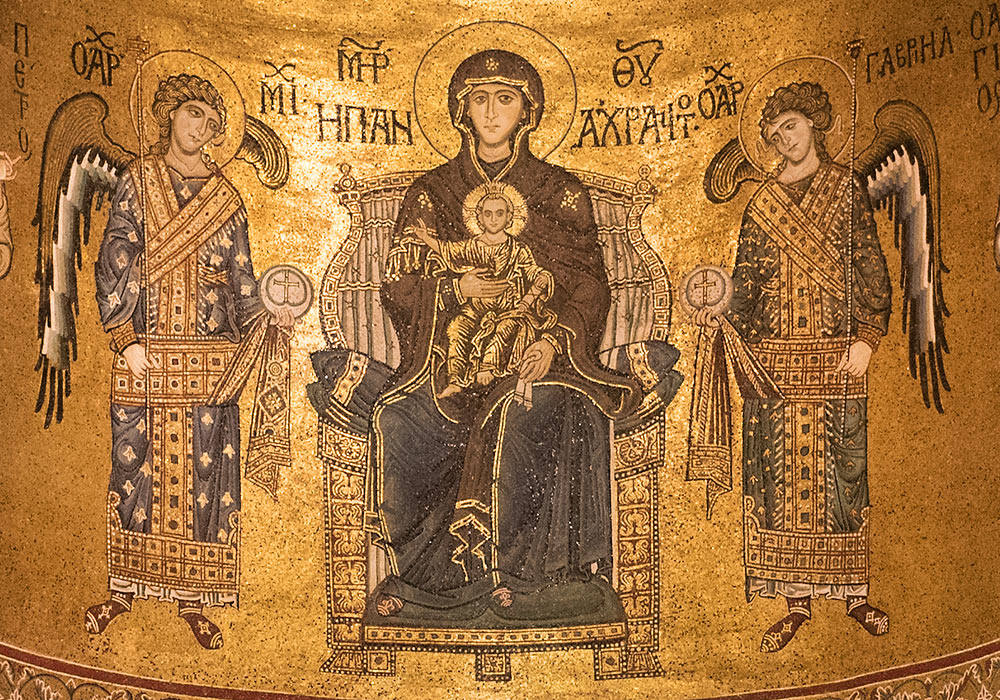
The Virgin and Child enthroned.
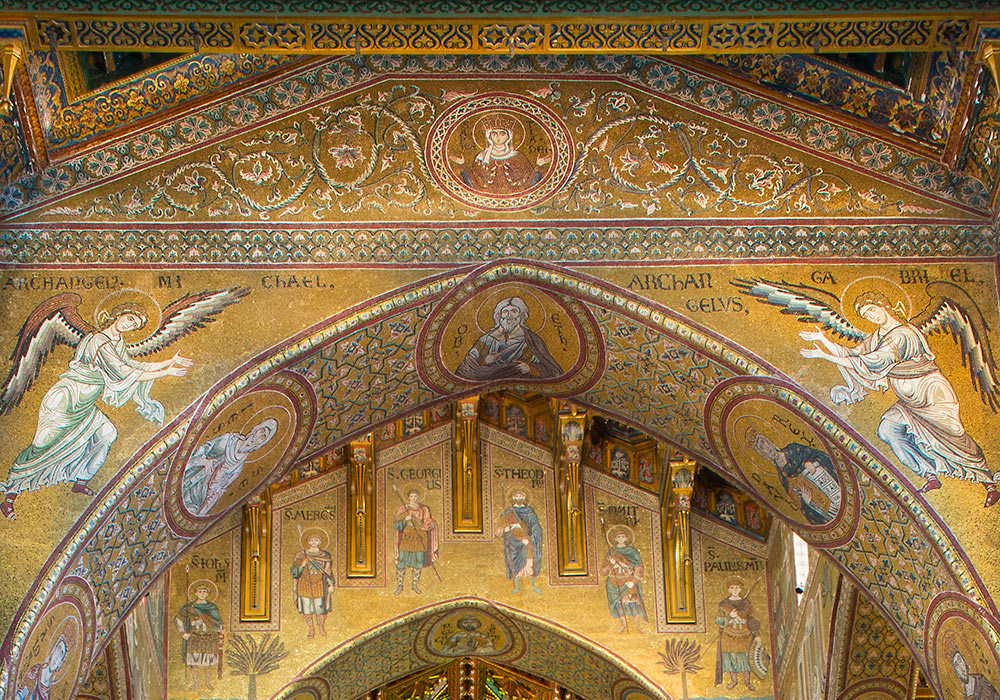
The magnificent golden interior of the Monreale cathedral.
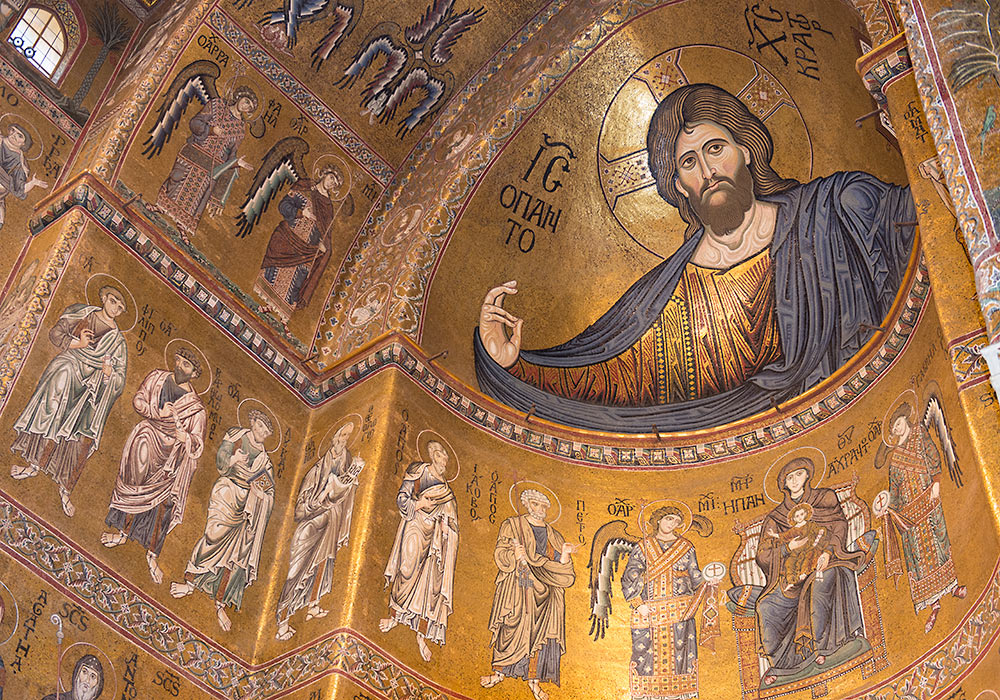
Photo: Per-Erik Skramstad / Wonders of Sicily
Related links
- Depictions of Jesus (as Christ Pantocrator) in Sicily
- The Monreale Cathedral
- The Cefalù Cathedral
- Mosaics in Sicily
- Churches in Sicily
La Zisa, Palermo

Detail of one of the mosaic decorations over a niche with a fountain in the Norman Palace La Zisa in Palermo.
The Palatine Chapel
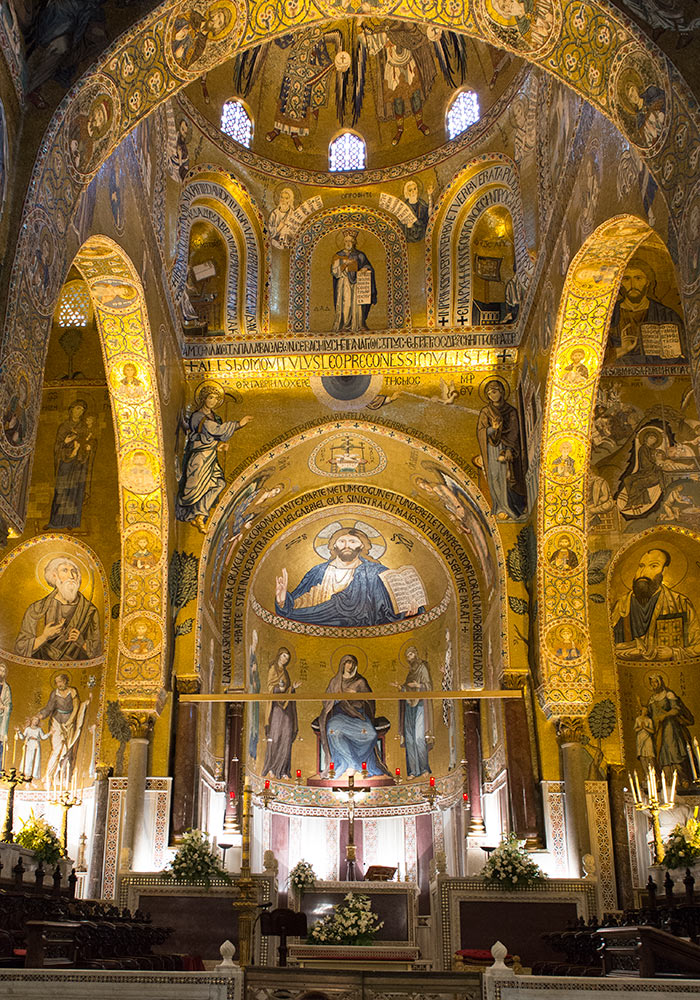
The Palatine Chapel is the royal chapel of the Norman kings of Kingdom of Sicily situated on the second floor at the center of the Norman Palace in Palermo. The chapel is a great symbol of multi-cultural cooperation. Craftsmen of three different religious traditions worked alongside each other.
Cefalù Cathedral
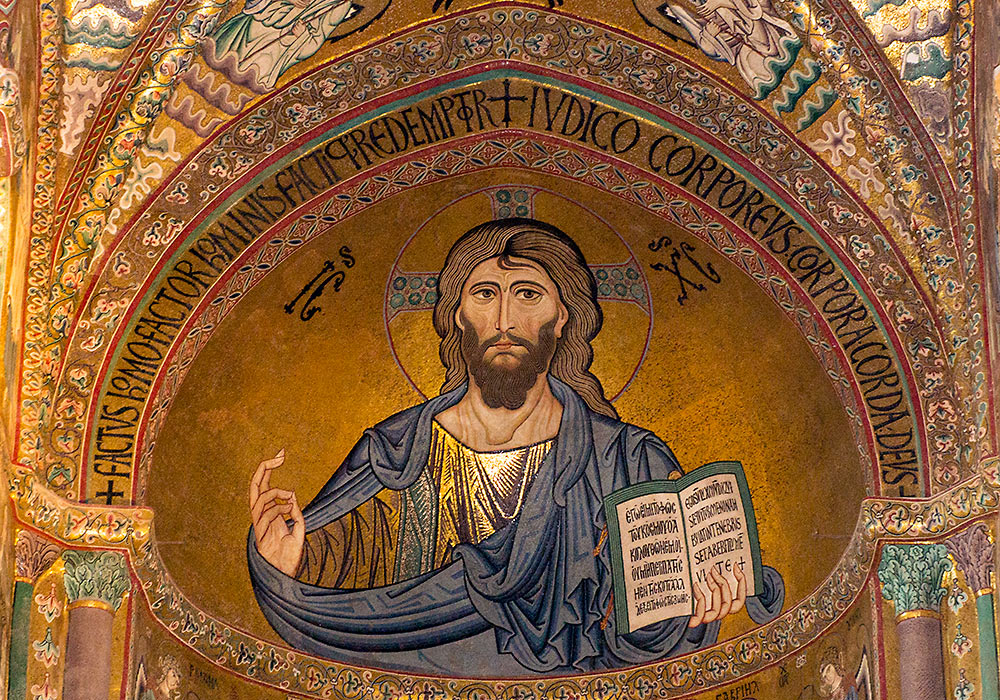
Christ Pantocrator in the Cefalù Cathedral. In his left hand he is holding a book, the text reads, in Greek and Latin: "I am the light of the world, who follows me will not wander in the darkness but will have the light of life." (John, 8:12)
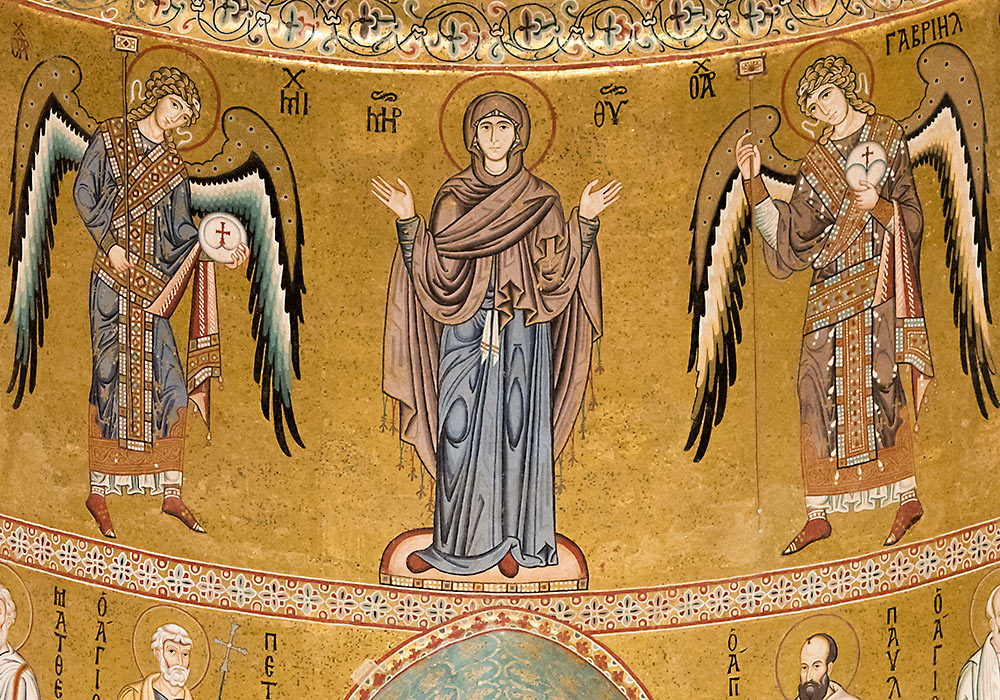
The Madonna flanked by archangels in the Cefalù cathedral.
Photo: Per-Erik Skramstad / Wonders of Sicily
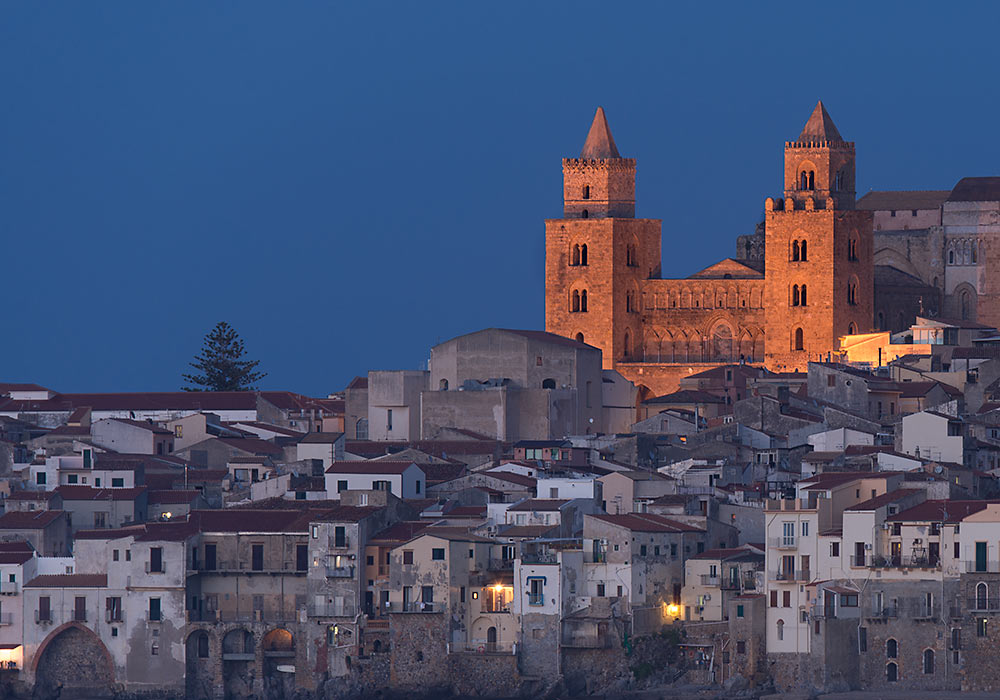
Cefalù in the evening. (ISO 100, f10, 6 sec)
Photo: Per-Erik Skramstad / Wonders of Sicily
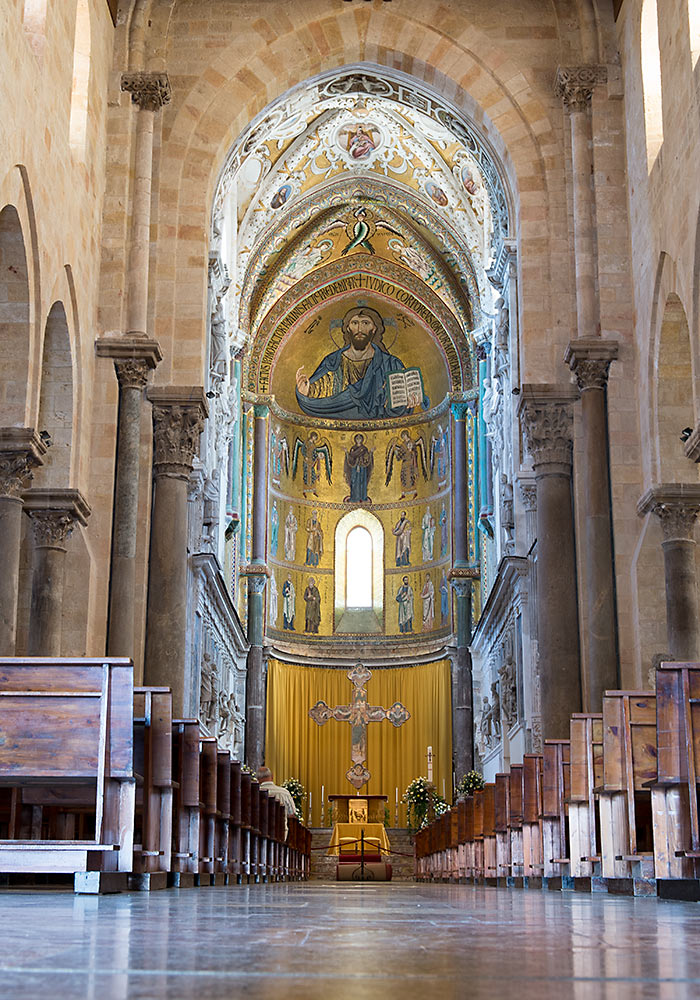
According to the historian John Julius Norwich (author of "The Normans in Sicily") the representation of the Pantocrator is the most sublime of all – "perhaps of Christ in any form in all Christian art". Construction began in 1131, the apse mosaics begun in 1145. After 1172 the church suffered a period of decline; the façade was completed in 1240. The Cathedral was consecrated in 1267 by Rodolphe de Chevriêres, Bishop of Albano.
Photo: Per-Erik Skramstad / Wonders of Sicily
Cappella Palatina (The Palatine Chapel)

The Palatine Chapel is the royal chapel of the Norman kings of Kingdom of Sicily situated on the second floor at the center of the Norman Palace in Palermo. The chapel is a great symbol of multi-cultural cooperation. Craftsmen of three different religious traditions worked alongside each other.
Photo: Per-Erik Skramstad / Wonders of Sicily
La Martorana (Santa Maria dell'Ammiraglio)
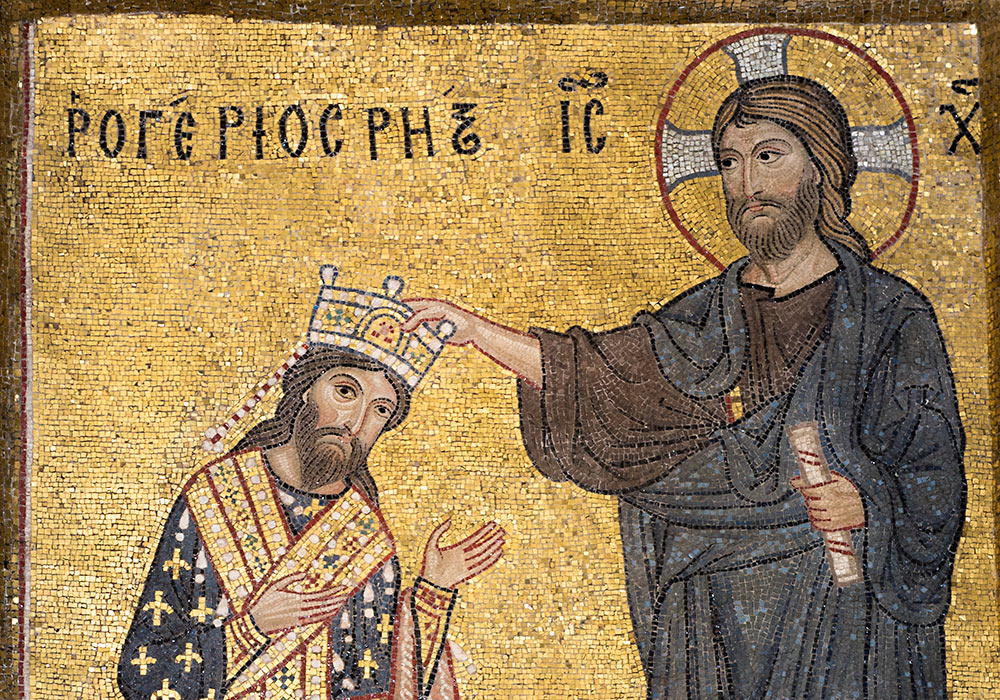
Roger II receiving the crown directly from Christ (and not the Pope). Mosaic in the Martorana church in Palermo. The mosaic carries an inscription Rogerios Rex in Greek letters.
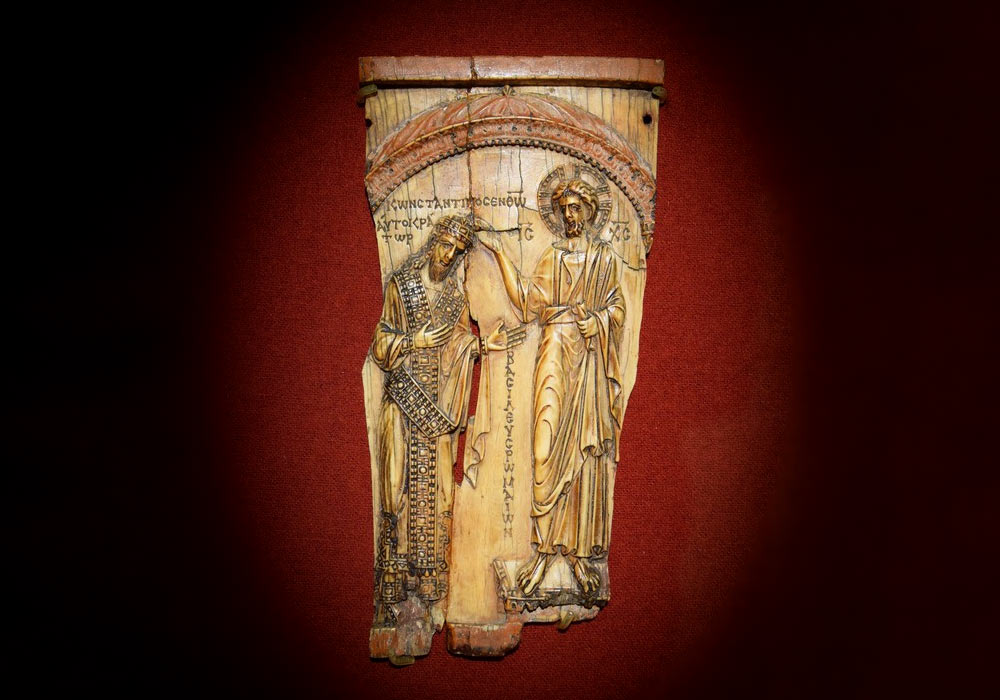
This ivory fragment can be seen in The Pushkin Museum, Moscow. “The mosaic portraits of the kings crowned directly by Christ in George of Antioch’s church of Santa Maria dell’Ammariglio, and later at Monreale, had specific and very old Byzantine precedents that were both visual and conceptual; in this instance, a depiction in ivory of Christ’s coronation of Emperor Constantine VII Porphyrogenitos (d. 959).” (Alex Metcalfe: The Muslims of medieval Italy, p. 237)
Photo: Wiener, J. B. (2017, November 13). Constantine VII & Christ. Ancient History Encyclopedia. Retrieved from https://www.ancient.eu/image/7624/ (CC BY-NC-SA 3.0)
Villa del Tellaro
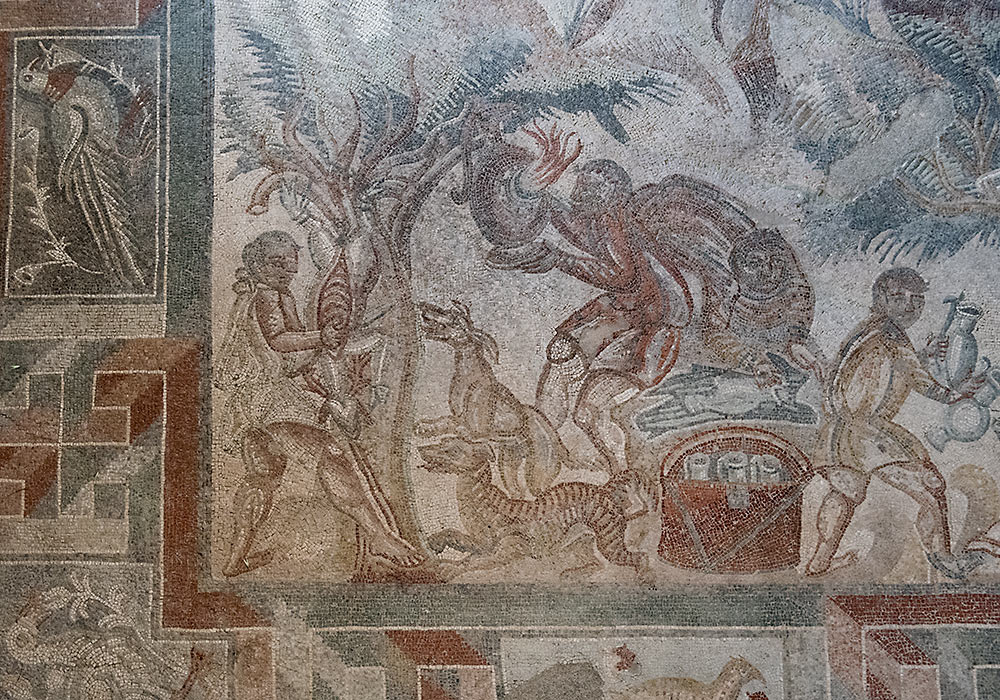
The Roman Villa del Tellaro was discovered in 1971. The mosaics were probably the work of craftsmen from North Africa. Based on numismatic evidence, they were made in the second half of the fourth century CE. In 2008 it was inaugurated and made accessible to the public.
See also Villa Romana del Casale near Piazza Armerina.
Photo: Per-Erik Skramstad / Wonders of Sicily
Acireale - Agrigento - Castelbuono - Catania - Cefalù - Enna - Erice - Modica - Monreale - Noto - Palermo - Ragusa Ibla - Segesta - Selinunte - Taormina - Syracuse (Siracusa) - Trapani -

